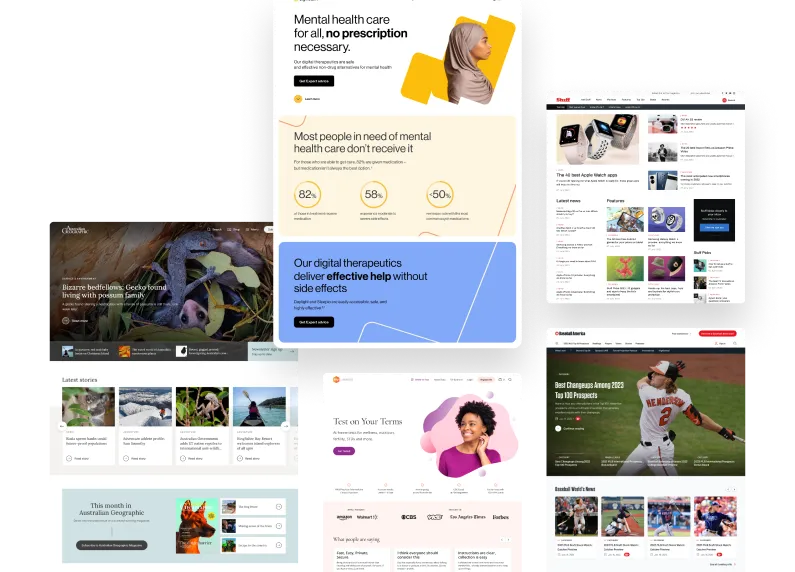The more we work with large online publishers, the more we appreciate the impact on-page advertising has on their bottom line.
The challenge these companies are facing is that their advertising strategies cannot be set-and-forget. They must evolve. They are realizing that not only is the technology behind advertising ever-changing, the attitudes, expectations, and behaviors of readers towards advertising is evolving just as fast.
The risks publishers face in response to this challenge are:
- Let their ad technology grow stale and watch their competitors leave them behind, or;
- Get implementation wrong and watch their audience engagement plummet
Basically, this means they must grow, and grow the right way, or die.
A stakeholder might put it this way:
“We want to maintain (or grow) our ad revenue but we need to make sure we maintain good page performance and user experience or we will lose our readers.”
For small sites, the method of implementation is important. For large sites with thousands/millions of visitors per day, implementation is everything!
The difficulty here is that this kind of implementation rarely results in better page performance and user experience.
A good rule of thumb is that the more things (like ads) being delivered to a page, the poorer the performance. The poorer the performance, the poorer the user experience.
Simply speaking the things that impact the performance of a page includes:
- The number of assets (content, code, images etc) being requested
- Where in the page code assets are being requested
- The number and location of servers the assets are being requested from
- The size of the assets
- The technology running on the servers
- The quality of the device and software of the user (you can’t really do much about this one)
With these many considerations, you can see how much care needs to be taken for good implementation. Ad services, or ad providers, send a variety of assets to the reader’s browser including images, text and tracking code snippets. Additionally, the page itself is often part of the actual bidding process for auction-based ad services. The nature of what on-page advertising is and what it requires means it is primed to be a major drain on page performance.
But… it doesn’t have to be! When implementation is done right, publishers can realize the revenue upside of an optimised ad strategy without damaging page performance and user experience.
Unsurprisingly, most large publishers are, and have been, careful about ad implementation. However, ad revenue is under increasing pressure from a few fronts. Be it ad-blockers, which are starting to see mass-market adoption, or general banner-blindness, on-page advertising on large publishing sites needs to be more than just good. it needs to be really, really good. A 1% decrease in ad engagement can have a significantly negative impact on overall profit.
We are finding that ad strategy implementation, or general revenue optimisation, is a frequent conversation topic with our clients and contacts. These companies aren’t looking for general advice on which ad service they should choose or how they should design their banners, but are interested in leveraging technology to maximise ad revenue from what is perhaps an increasingly critical audience. They are looking for solutions like automated A/B testing, reader personalization, or as we have found in a recent project with our friends at Resignation Media, optimising on-page ad bidding and ad delivery, or Header Bidding.
For this particular project, the implementation of Header Bidding with the Resignation Media Team meant that they realized a few key benefits:
- Access to a wider range of ad providers
- Optimised on-page bidding (occurs very early during the page load)
- Transparency in reporting and analytics
Or put even simpler, the whole process was faster, more transparent, and more profitable.
Resignation Media were able to implement a more mature advertising strategy and actually improve page performance and user experience.
We’re looking to walk through the technical ins-and-outs of how Header Bidding works in a future post, but the core message is that with the right implementation, publishers can realize increased revenue through on-page advertising without sacrificing page performance and user experience.
If ad revenue is an important part of your bottom-line, what steps are you taking to manage the ever-evolving challenges of typical implementations? Are there opportunities for optimising your technology?
Want to take action to optimize your ad revenue? Contact us for a consultation.


